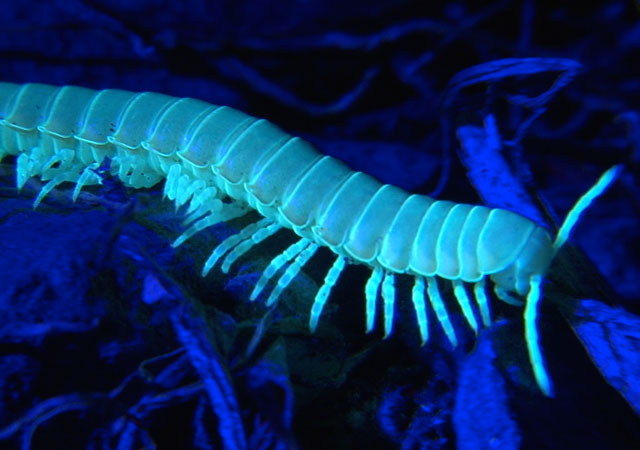Not seen for nearly 50 years, the small, blind millipede Xystocheir bistipita, was recently rediscovered in the foothills of San Luis Obispo, California by entomologist Dr Paul Merek of the Virginia Polytechnic Institute.
Analysis of Xystocheir bistipita's DNA revealed that the millipede actually belonged to a different genus, Motyxia - the only genus of bioluminescent millipede in the western hemisphere.
The identity-challenged millipede was then renamed Motyxia bistipita.
The researchers ranked the light intensity and toxicity of all the millipedes in its newly acquired family and found that M. bistipita is pretty dull and less toxic compared to its mountain-dwelling cousins, which are larger and much more luminous.
The brighter the millipedes were, the more cyanide they contained, which suggests the millipedes at higher elevations use bioluminescence as a forewarning to predators.
M. bistipita has very few predators - so why does it still glow in the dark? Unlike fireflies that glow because of an enzymatic reaction that converts a pigment called luciferin into a new compound that emits light, bioluminescence in millipedes is caused by the reaction of a photoprotein that uses magnesium and molecules that contain oxygen.
"After we sequenced them we were able to place the millipede on an evolutionary tree with other bioluminescent species of Motyxia," says Marek.
source: go here


No comments:
Post a Comment